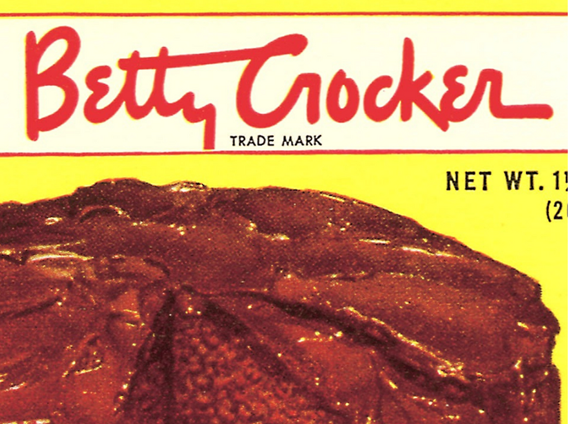
The “First Lady of Food”
This month, Betty Crocker turned 103 years old.
So let’s look back at how Betty was born, her legacy and the impact she’s having today.
A puzzle and a pincushion
In late October 1921, an edition of The Saturday Evening Post was published with a unique Gold Medal Flour ad in it.
The ad asked consumers to complete a jigsaw puzzle and mail it to our predecessor company, Washburn-Crosby in Minneapolis, Minnesota. In return, they would receive a pincushion in the shape of a bag of flour.
Along with 30,000 completed puzzles came several hundred letters with cooking-related questions.

In a stroke of marketing genius, the company’s Advertising Department convinced its board of directors to create a personality that the women answering the letters could all use in their replies.
The surname Crocker was chosen in honor of a retired executive, William G. Crocker. Betty was chosen because of its friendly sound.
An informal contest was held between female employees to find the most distinctive Betty Crocker signature. Florence Lindberg’s version was chosen. It’s still used today, with only slight revisions.
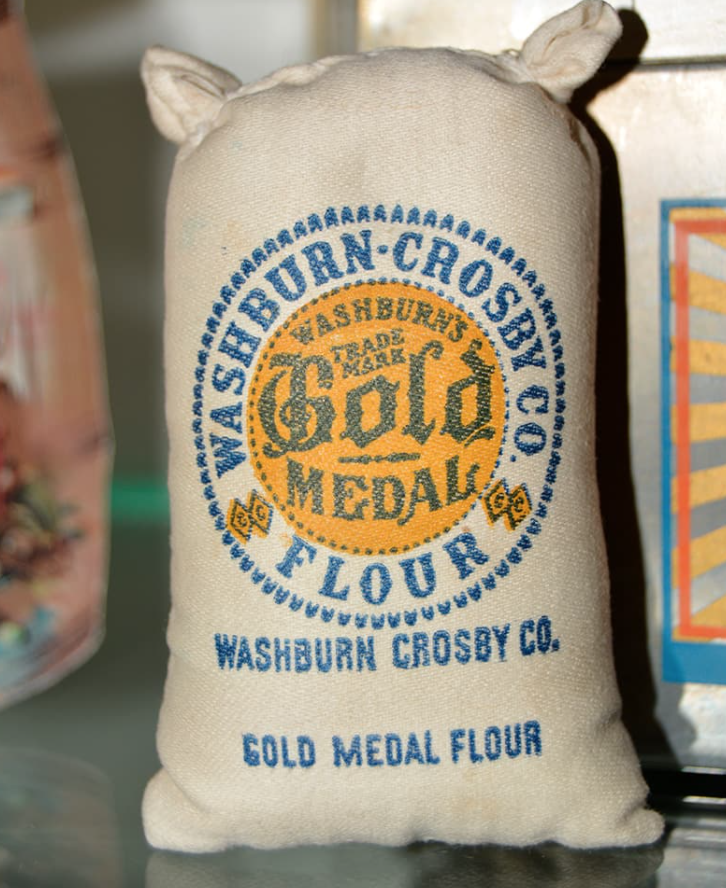
Sponsored cooking schools
Washburn-Crosby quickly recognized the importance of using Betty Crocker to help people become better bakers and cooks.
So the company started sponsoring cooking schools across the U.S. and employing home economists to carefully test and demonstrate its flour. Meanwhile, the demand for baking information continued to grow along with the staff in the company’s Home Service Department.
The Betty Crocker Cooking School of the Air
In 1924, Betty got her voice, literally. She appeared in daytime radio’s first cooking show – the “Betty Crocker Cooking School of the Air.”
It started on October 2, 1924. on WCCO radio in Minneapolis. It later expanded to 13 regional stations.
Each station had its own Betty Crocker voice, reading scripts written by the Home Service staff. In 1927, the cooking school became a program on the fledgling NBC network, continuing for 24 years with more than one million listeners enrolled.

Because she was such a fixture on radio, by the early 1940s surveys showed that the name Betty Crocker was known to nine out of ten American homemakers. According to Fortune magazine in April 1945, she was the second best-known woman in America, followed by First Lady Eleanor Roosevelt.
So Betty became known as the “First Lady of Food.”
In the late 1940s, Betty started appearing on television.
Between 1949 to 1964 actress Adelaide Hawley played Betty Crocker as one of history’s only “living trademarks.” Hawley, in her role as Betty, appeared in various programs on CBS and ABC, and U.S. viewers watched as she showed celebrities and icons of the day how to bake like a Betty.
Betty’s first official face
Betty didn’t receive an official persona until her 15th anniversary in 1936. Neysa McMein, a prominent commercial artist, was commissioned to create a portrait. Her rendition, putting Betty in a red jacket with a white collar, established a tradition for future portraits.
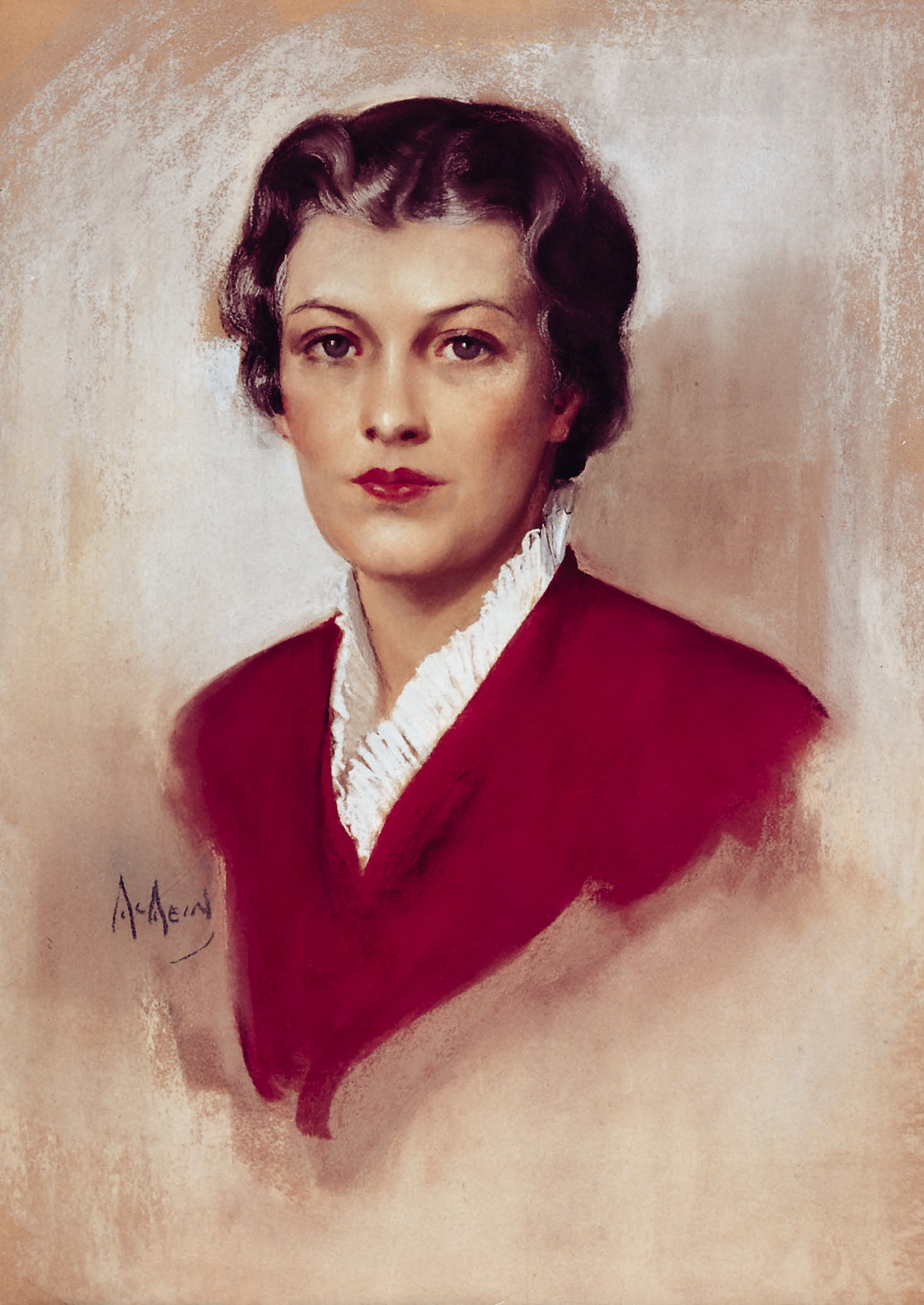
There have been eight portraits, evolving Betty’s look with a variety of hairstyles and fashions. After 1936, portraits also were done in 1955, 1965, 1969, 1972, 1980, 1986 and 1996.
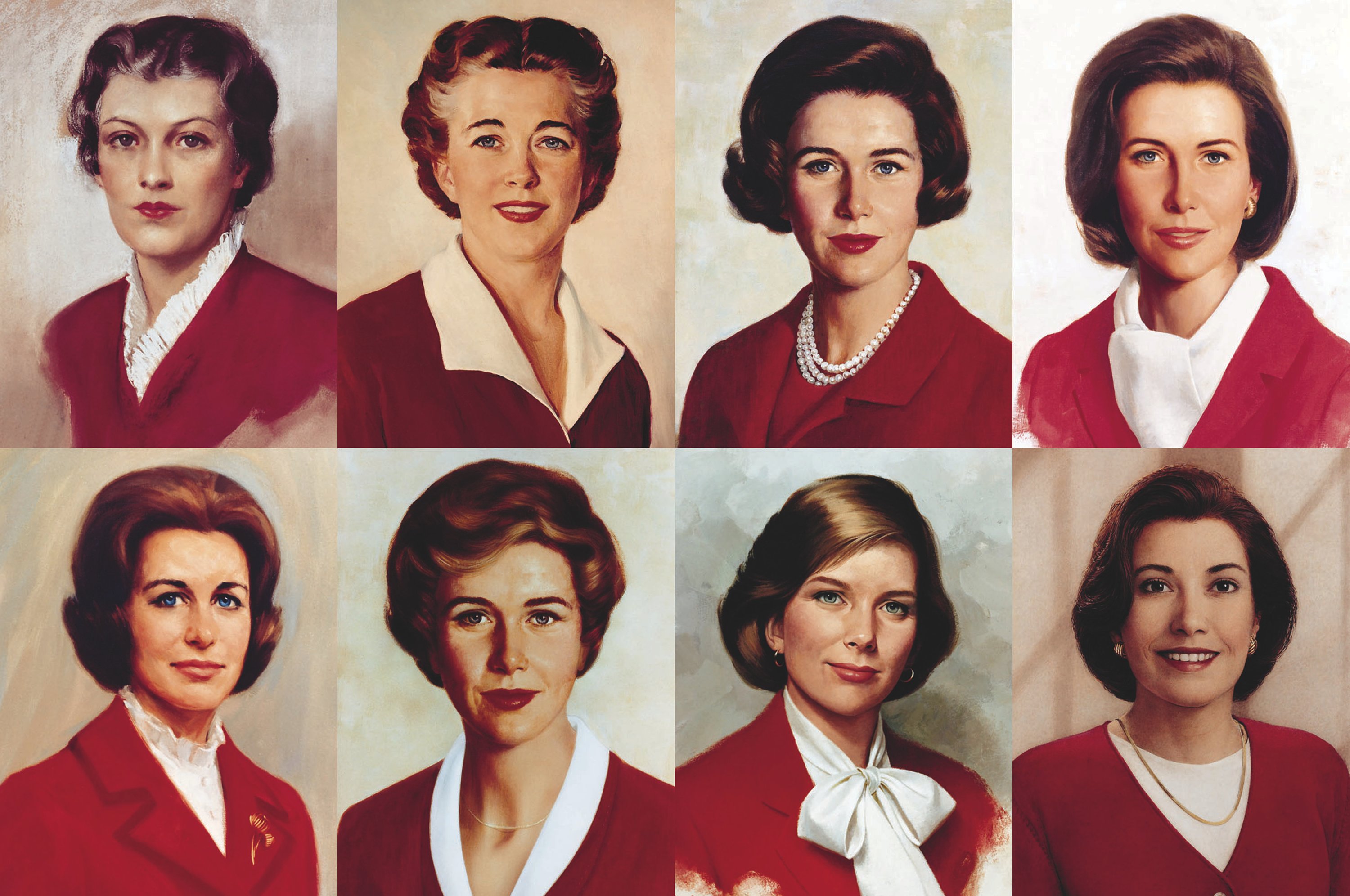
The last one, for Betty’s 75th birthday, was made from a computerized composite of 75 women (and the 1986 portrait).
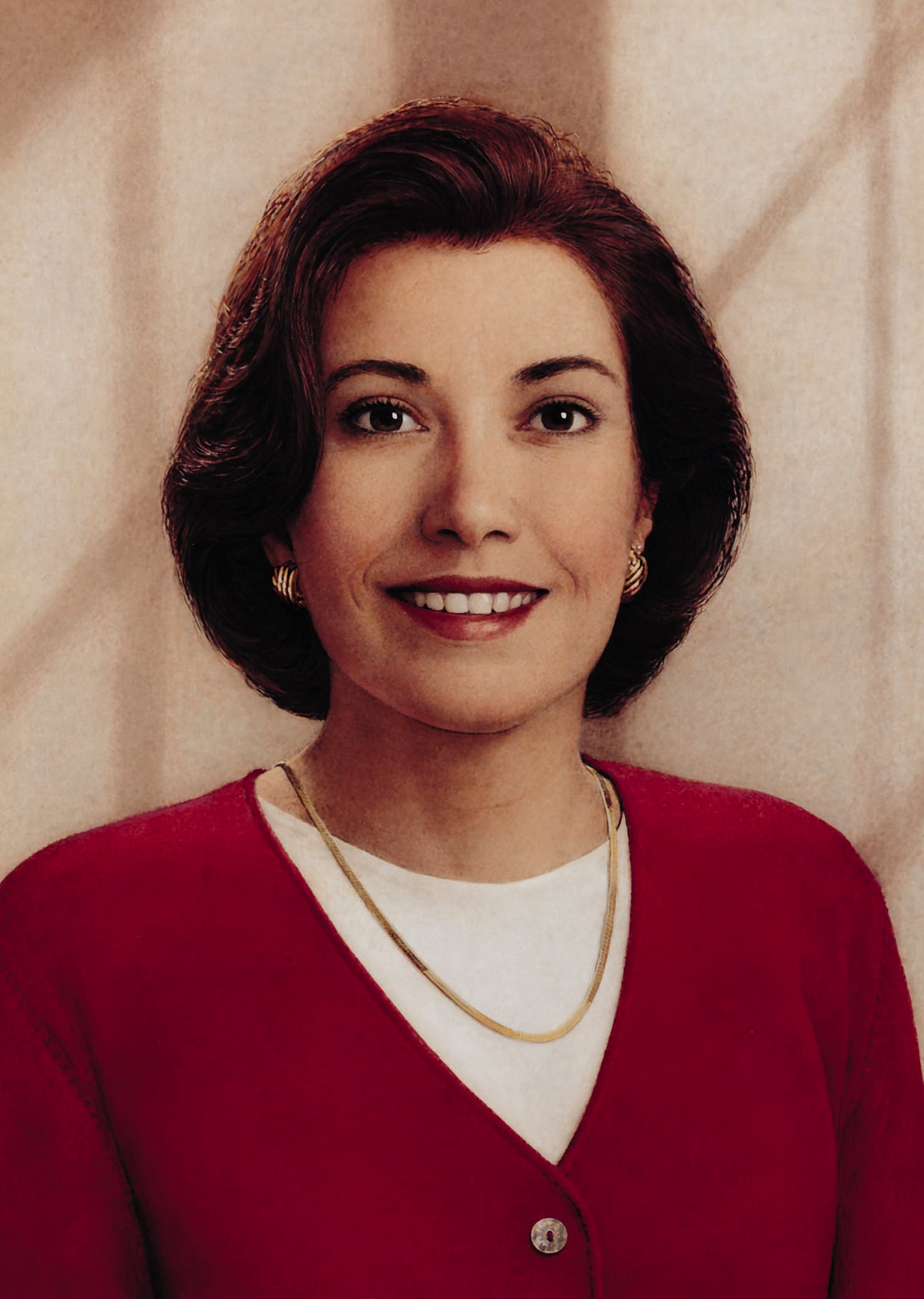
The women of diverse backgrounds and ages were identified in a search across the U.S. for women who embodied the characteristics that make up the spirit of Betty Crocker: enjoys cooking and baking, committed to family and friends, resourceful and creative in handling everyday tasks, and involved in her community.
The Betty Crocker Test Kitchens
In 1946, the Betty Crocker Test Kitchens were officially established at the General Mills office in downtown Minneapolis. They were designed to test products and recipes using the same tools and equipment as the average home cook.
The kitchens soon became a popular tourist destination. People came from all over. During a five-year span in the 1940s and early 50s, more than 26,000 people signed the guest book.
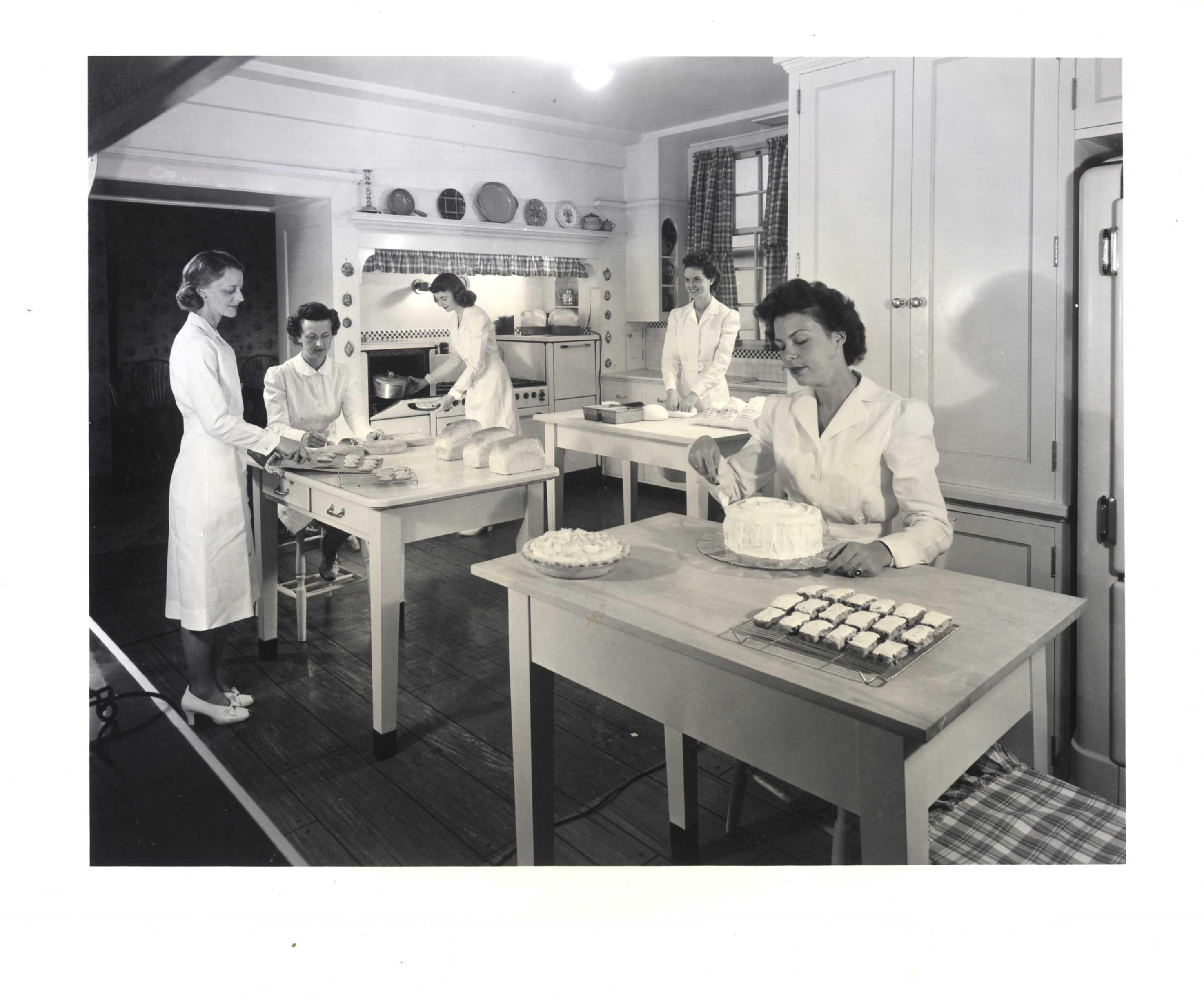
In 1958, the test kitchens moved out to our new headquarters in Golden Valley, Minnesota. They were renovated in 1966, with seven test kitchens, each named after a region of the world famous for its distinctive cuisine, such as the Latin American Kitchen and the Japanese Kitchen.
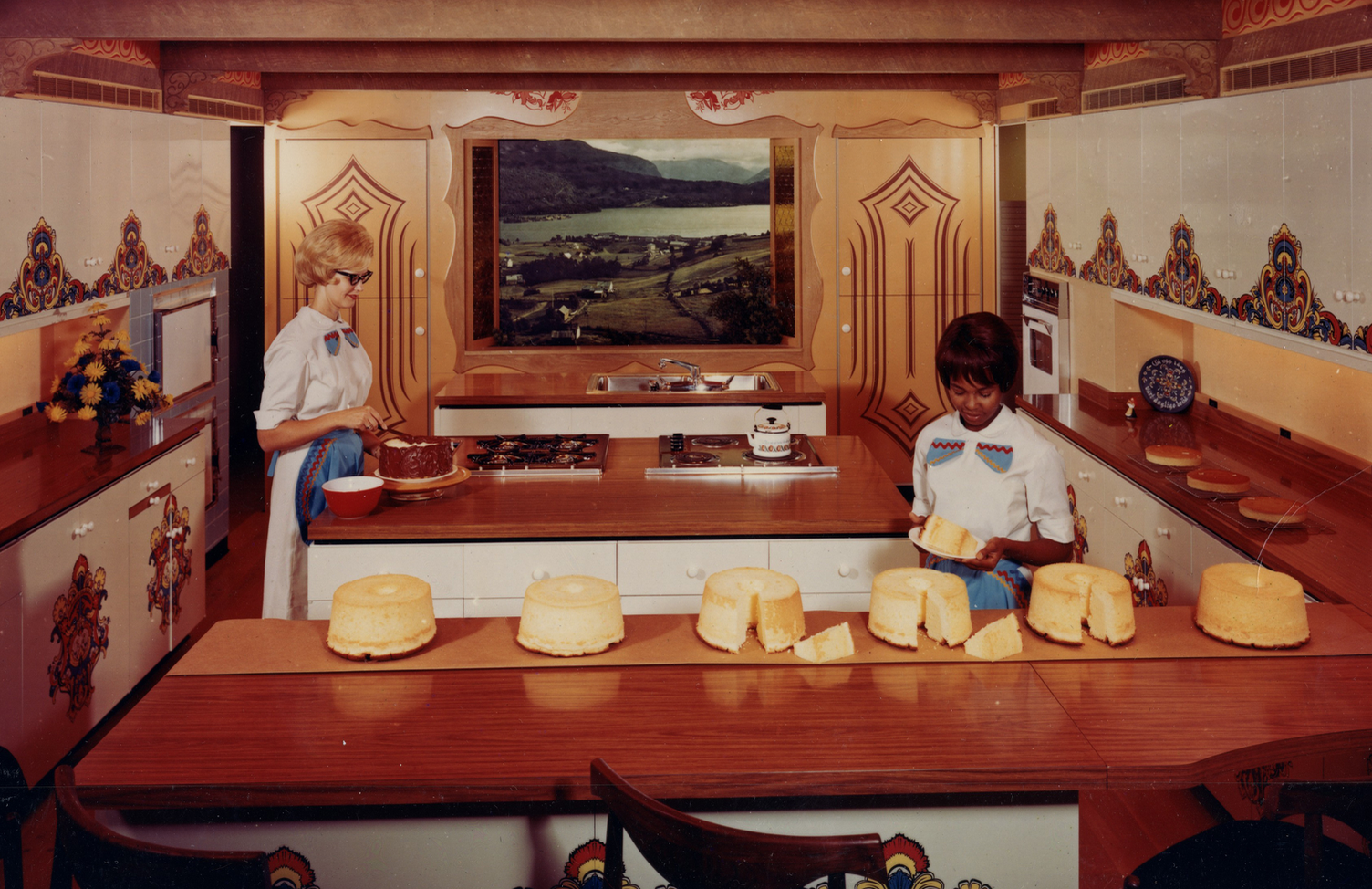
Public tours ended in 1985, in part because of a growing conflict between the desire to preserve the confidentiality of General Mills’ expanding new product research and the goal of providing high-quality tours.
Big Red
It may surprise you to learn that Betty didn’t have her first cookbook until 1950. World War II delayed the publication of “Betty Crocker’s Picture Cook Book.”
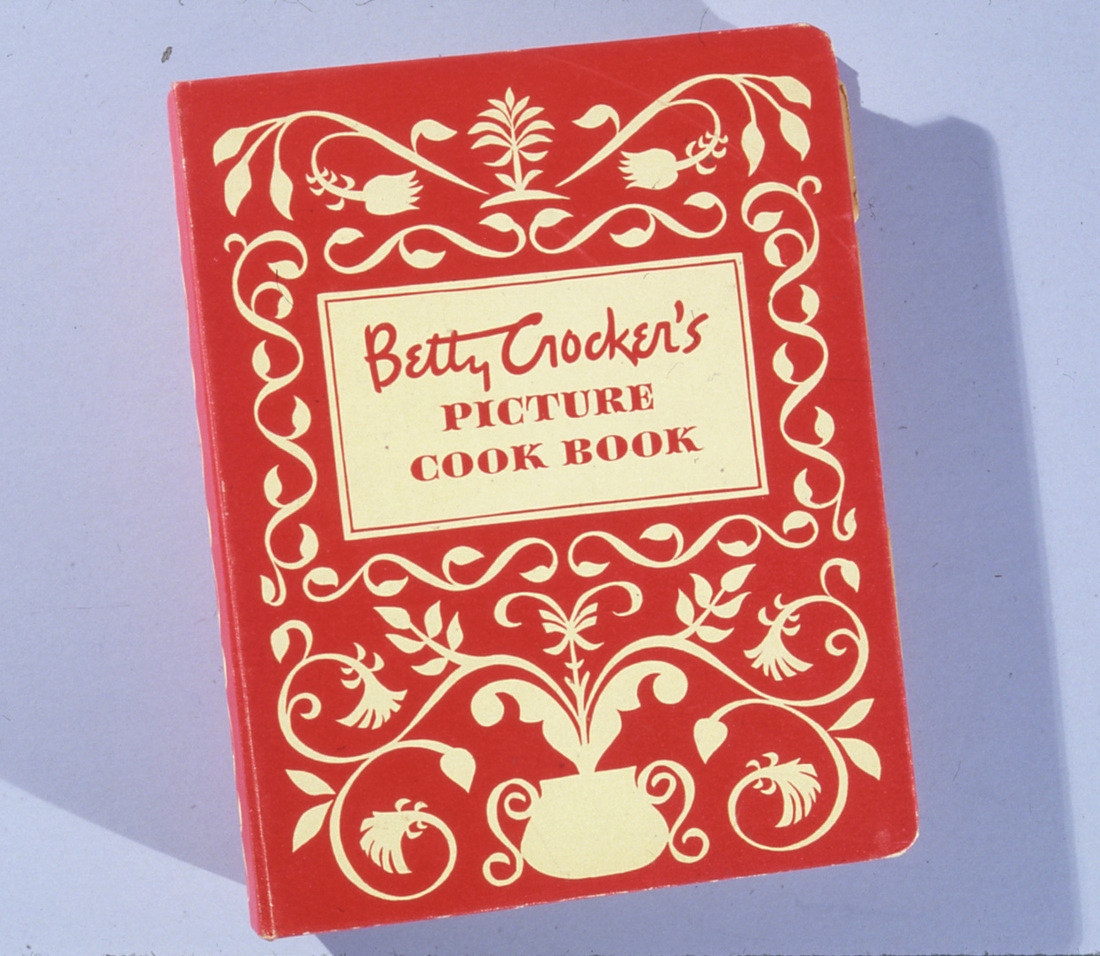
Nicknamed “Big Red,” it quickly became a best-seller. Over 2.5 million copies were sold in its first year.
The cookbook was designed to be used by any cook no matter their skill level. Each recipe was thoroughly tested in the Betty Crocker Kitchens.
The classic 1950 original is now in its 13th edition, with a new edition of Big Red released every five or so years.
First products
The first food product with the Betty Crocker name on it was dried soup mix, introduced in 1942.
Betty Crocker packaged cake mixes were introduced five years later, in 1947, with Ginger Cake, the precursor of today’s Betty Crocker Gingerbread Cake.
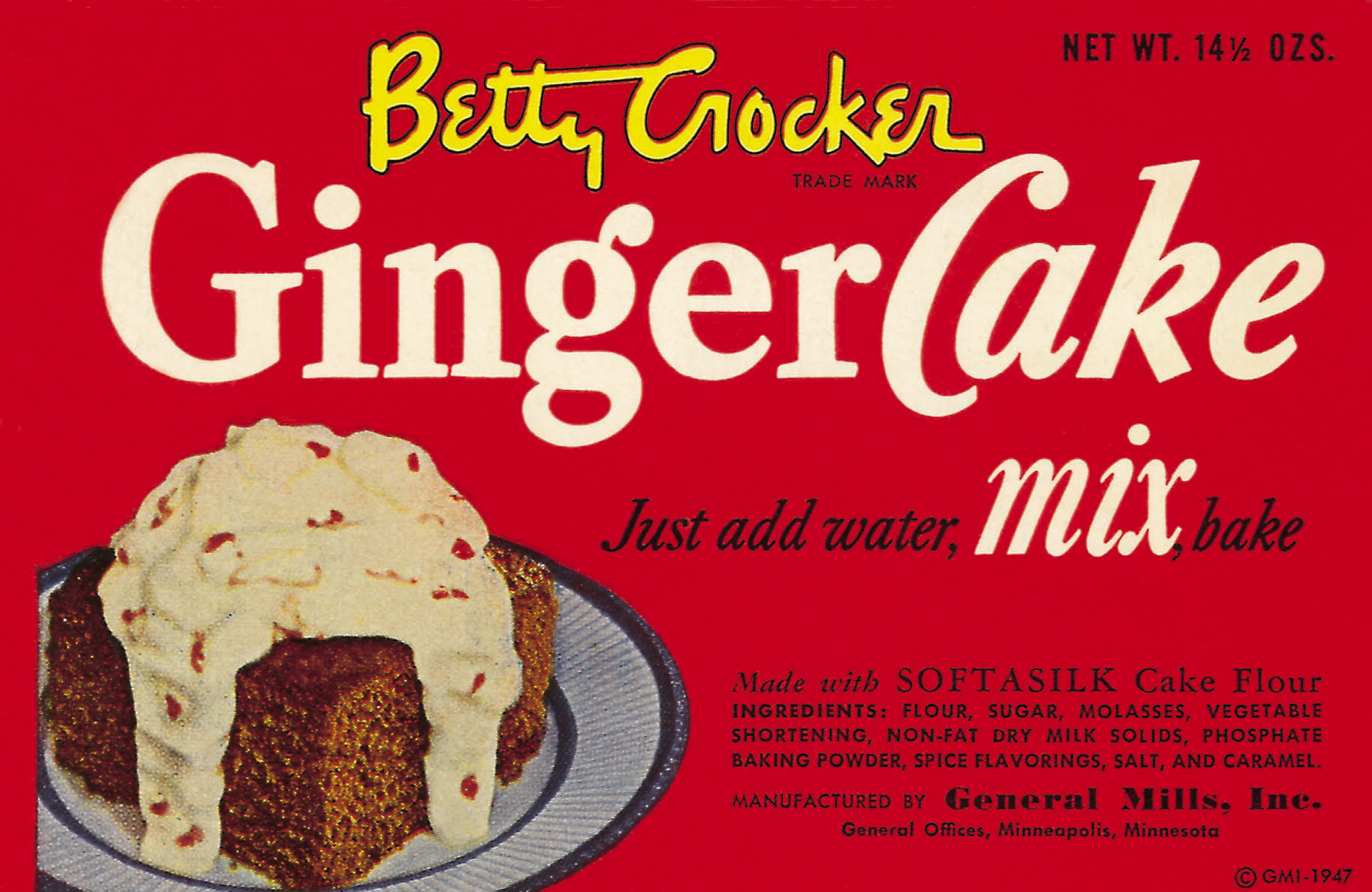
It was quickly followed by Devil’s Food Cake Mix and Party Cake Mix, which could be made into yellow, white or spice cake by using water plus whole eggs, just the whites or by adding spices along with the eggs.
A simple change leads to the red spoon
Betty’s trademark Red Spoon began appearing on packaging in 1954 (replacing a logo from 1953, that had the Betty signature enclosed in a red oval).
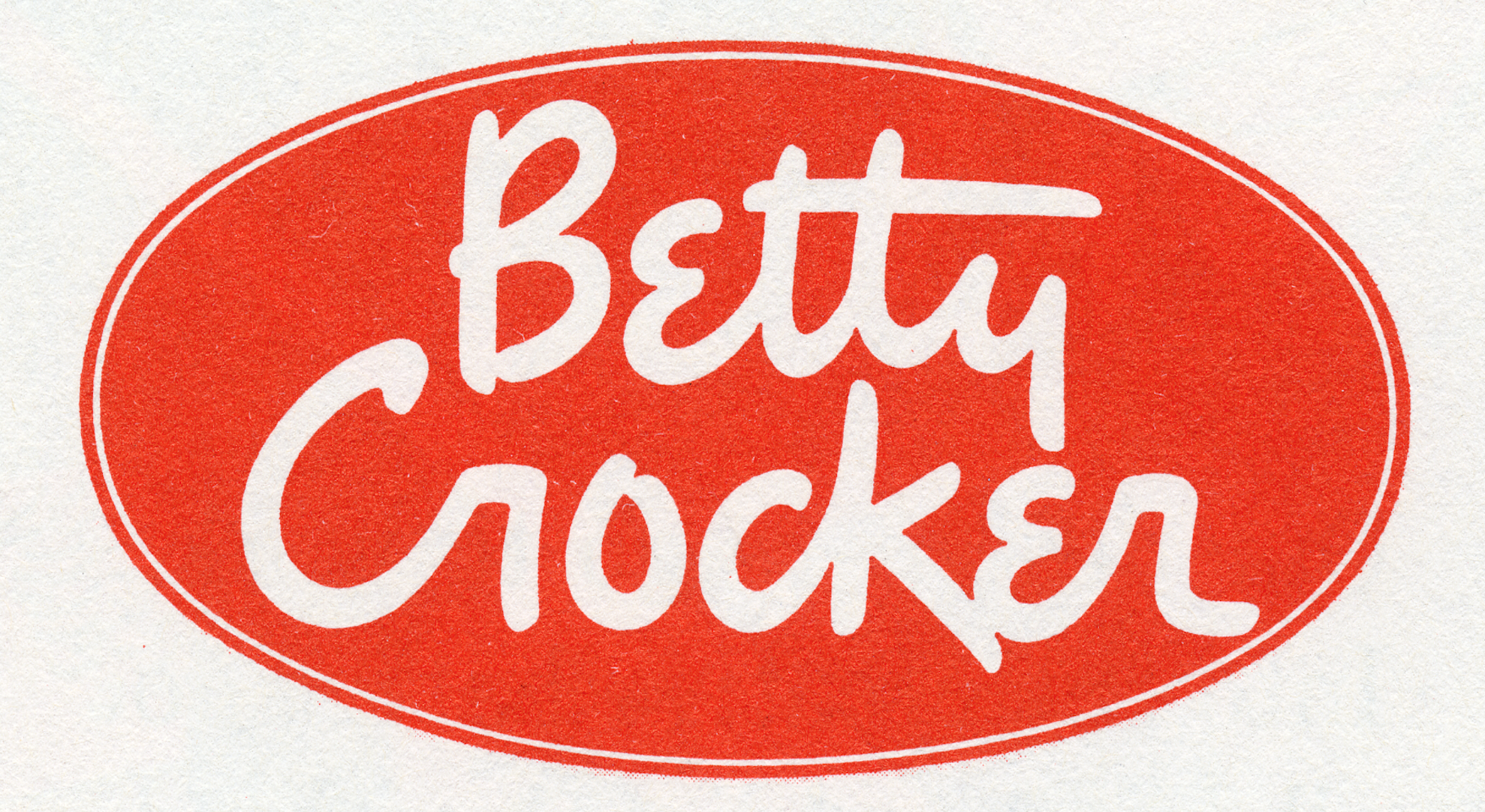
Using the existing logo as a foundation, New York-based public relations firm Lippincott & Margulies changed the oval into the bowl of a spoon, added a stem and handle, and tweaked the signature.
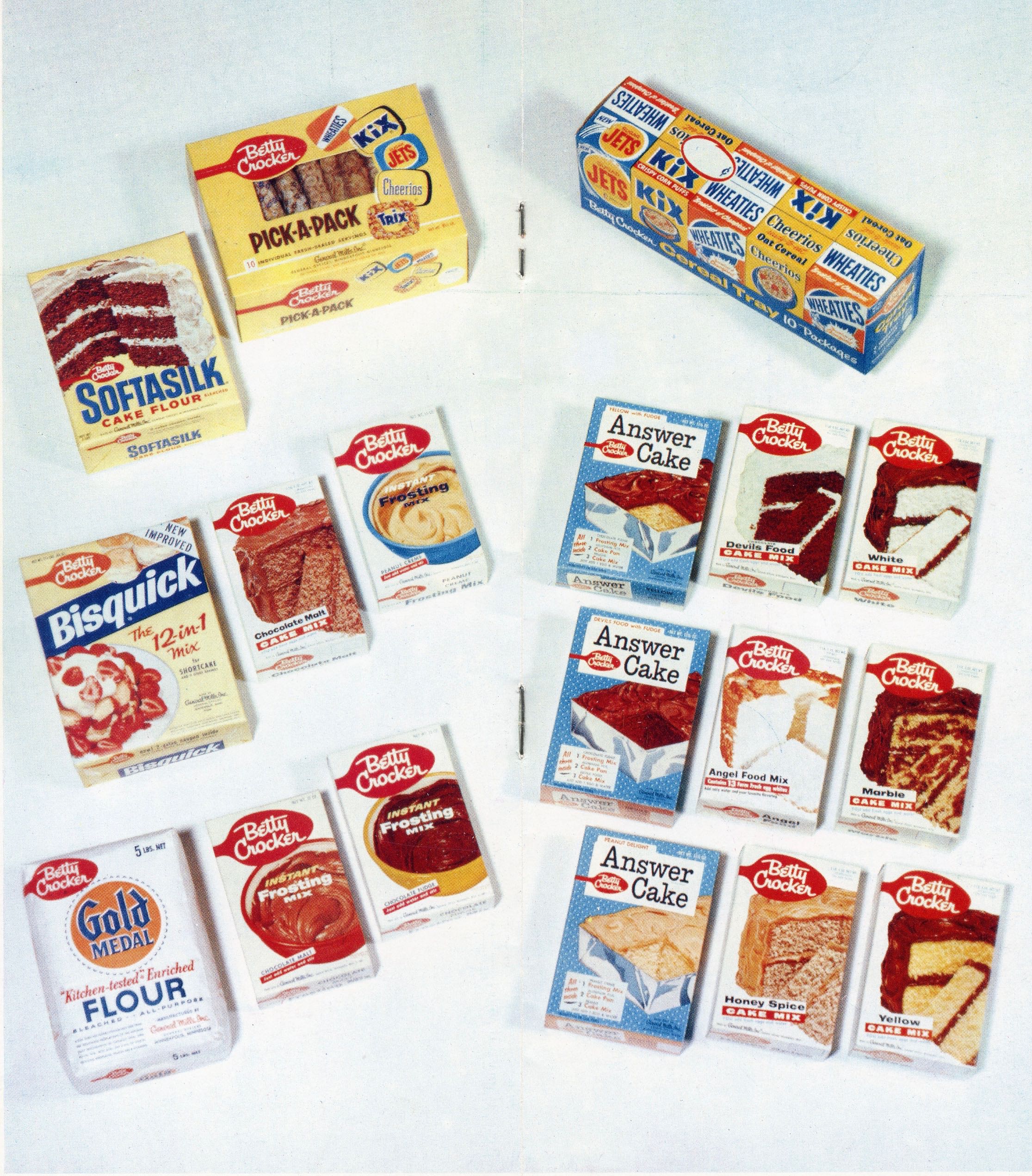
A 1950s-era pamphlet “A Spoon Is Born,” declared:
“The spoon and Betty Crocker become one, a kitchen helper, a symbol of good products and recipes, a friendly, homemaker’s guide … a familiar household implement she uses every day in mixing, cooking and eating.”
The red spoon made its first appearance on Gold Medal Flour in 1954, and was later added to Betty Crocker’s cake mix packaging and Bisquick.
Today, it’s a symbol of the quality associated with Betty Crocker and appears on more than 200 products, including Super Moist Cake Mixes, cookie mixes, Supreme Brownie Mixes, Rich & Creamy Frostings, Bisquick Baking Mix, and Betty Crocker Potatoes.
Betty’s global reach
Betty’s popularity isn’t confined to the country where she was born.

She arrived in Canada in the mid-1950s and has swiftly made her way around the world. She enjoys a strong presence in the UK, Iceland, Saudi Arabia, Mexico, Australia and other countries throughout Europe, the Middle East and Asia. Betty’s products are specially adapted for the baking style and culture of each country.
Even more relevant today
Launched in 1997, BettyCrocker.com continues the legacy of adapting, discovering and sharing the knowledge that home cooks crave. Betty also reaches several million fans monthly on social media.
Whether viewed as an icon of food expertise and reliable products or as a real person, Betty Crocker’s luminous career endures. At 103, she can still be counted on to offer reliable and accessible recipes, sound cooking and baking advice and dependable products to home cooks and bakers.
As she wrote in the preface of the “Betty Crocker’s Picture Cook Book” in 1950, she is dedicated to working for “all of you who like to minister to your dear ones by serving them good food.”
For more information on the history of Betty Crocker, read "The Story of Betty Crocker".
